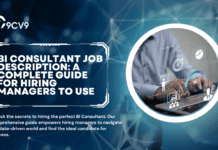Key Takeaways
- AI talent salaries in 2025 continue to rise globally, with top-tier roles exceeding $400,000 in total compensation.
- Effective cost management requires balancing recruitment expenses, retention incentives, and infrastructure optimization.
- Companies adopting FinOps strategies and internal upskilling programs gain a competitive edge in controlling AI workforce costs.
Artificial Intelligence (AI) has evolved from an experimental technology into the backbone of modern innovation across industries. As enterprises accelerate their digital transformation strategies, the global demand for AI professionals has reached record levels, redefining salary structures, workforce planning, and organizational budgets. The year 2025 marks a pivotal phase in this evolution, where hiring AI talents is no longer a niche initiative but a strategic necessity. Companies seeking to remain competitive in data-driven markets must not only attract highly skilled AI engineers, data scientists, and machine learning specialists but also understand the financial implications of doing so.

The AI labor market is experiencing unprecedented salary inflation, driven by the scarcity of deep technical expertise and the rapid adoption of generative AI systems. From tech giants to startups, organizations are willing to offer premium compensation packages to secure top-tier talent capable of developing, deploying, and scaling AI-driven solutions. This demand surge has led to a competitive hiring environment where global salary benchmarks vary dramatically based on role specialization, geography, and industry sector. For instance, AI researchers and machine learning engineers now command compensation levels comparable to senior executives, highlighting the strategic importance of their contributions.
However, the cost of hiring AI talent extends beyond direct salaries. Organizations must account for hidden expenses such as onboarding, infrastructure provisioning, upskilling programs, and ongoing cloud compute costs associated with AI model training and deployment. In 2025, the integration of financial governance frameworks like FinOps has become essential to manage these operational expenses effectively. Businesses must balance innovation ambitions with financial prudence to prevent resource inefficiency while maintaining access to cutting-edge talent and technology.
This comprehensive guide explores the current landscape of AI salaries and hiring costs in 2025, offering data-driven insights into compensation ranges, regional disparities, and emerging trends shaping the AI labor ecosystem. It also examines how automation, remote hiring, and global talent sourcing strategies influence cost structures and recruitment dynamics. The objective is to equip decision-makers with the intelligence needed to make informed hiring and budgeting decisions in an era where AI capabilities directly determine organizational competitiveness.
Furthermore, the discussion delves into the strategic implications of skill specialization. As AI technologies mature, companies are increasingly distinguishing between generalist data roles and advanced, high-impact positions such as prompt engineers, AI ethics specialists, and machine learning operations (MLOps) experts. This differentiation is reshaping the talent hierarchy and forcing employers to rethink compensation models that reflect both the rarity of skills and the measurable business outcomes delivered by AI professionals.
By analyzing the interplay between salary trends, hiring costs, and productivity gains, this guide aims to provide a holistic view of the evolving AI employment economy. Readers will gain insights into the deflationary effects of automation on entry-level positions, the inflationary pressures on elite technical talent, and the long-term cost optimization strategies that enterprises can adopt to sustain growth. Whether you are a business leader planning to expand your AI capabilities, an HR strategist benchmarking salary budgets, or a technology investor assessing labor market trends, understanding these dynamics is crucial for future success.
Ultimately, the 2025 AI hiring landscape reflects a new era of workforce economics — one where skill, innovation, and capital efficiency intersect. Mastering this balance will define which organizations lead the next wave of AI-driven transformation and which struggle to keep pace with the shifting tides of technological advancement.
Before we venture further into this article, we would like to share who we are and what we do.
About 9cv9
9cv9 is a business tech startup based in Singapore and Asia, with a strong presence all over the world.
With over nine years of startup and business experience, and being highly involved in connecting with thousands of companies and startups, the 9cv9 team has listed some important learning points in this overview of A Guide to Salaries and Costs of Hiring AI Talents in 2025.
If your company needs recruitment and headhunting services to hire top-quality employees, you can use 9cv9 headhunting and recruitment services to hire top talents and candidates. Find out more here, or send over an email to [email protected].
Or just post 1 free job posting here at 9cv9 Hiring Portal in under 10 minutes.
A Guide to Salaries and Costs of Hiring AI Talents in 2025
- Global Market Dynamics: Quantification of the AI Skill Premium
- Direct Compensation Analysis: US Benchmarks for Critical AI Roles
- Global Salary Benchmarking: Geographic Cost Stratification
- The Total Cost of AI Talent Acquisition (TCAI) and Retention
- Operational Cost Modeling: Compute and Infrastructure Economics
- Strategic Recommendations and Cost Optimization Frameworks
1. Global Market Dynamics: Quantification of the AI Skill Premium
a. The Quantitative Value of AI Skills: The Hyper-Inflationary Premium
The ongoing and rapid integration of artificial intelligence across diverse business functions has generated an unprecedented demand for highly specialized talent. This surge in demand has significantly reshaped labor market valuations, particularly for roles directly involved in AI development, deployment, and management. Employers across industries are increasingly recognizing AI expertise as a strategic asset, translating into markedly higher compensation packages for skilled professionals.
The Quantitative Impact of AI Expertise on Compensation
Extensive market analyses indicate that professionals possessing AI skills consistently receive substantial salary premiums across regions and sectors. Research data from 2025 suggests that AI proficiency can increase annual compensation by anywhere from 19% to 56%, resulting in an average additional earning of over $18,000 per year compared to non-AI roles.
This wage inflation has accelerated sharply in the past year. Studies tracking over 2 billion job postings reveal that the AI wage premium surged from 25% to 56%, driven by the rapid adoption of Generative AI technologies, which have now been implemented by approximately 72% of enterprises. The sudden, heightened demand for talent capable of designing, training, and maintaining sophisticated generative AI systems has created a market shock, propelling salaries beyond historical growth rates.
Differentiation Between Practical Experience and Credentials
A key factor influencing compensation levels is the type of AI skill an employee possesses. Practical, hands-on experience attracts a premium of 19% to 23%, significantly higher than the 9% to 11% premium associated with certifications or academic credentials alone. This trend highlights a maturing labor market in which employers prioritize immediately deployable capabilities over theoretical knowledge. High-risk projects and the complex nature of AI deployments justify the higher remuneration for candidates who can effectively operationalize AI models in real-world environments.
AI Skill Wage Premium Structure in 2025
Premium Driver: AI Skills (General Competency)
Premium Range: 19% to 56%
Key Finding: Professionals earn an average annual increase of over $18,000.
Premium Driver: Practical Hands-on Experience
Premium Range: 19% to 23%
Key Finding: Outperforms credential-based premiums due to immediate applicability.
Premium Driver: Certifications/Credentials
Premium Range: 9% to 11%
Key Finding: Valued less than hands-on experience but still recognized.
b. Sectoral Demand Intensity and Job Susceptibility
The current labor market exhibits a pronounced stratification in AI talent demand across industries. Certain sectors are demonstrating an exceptionally high requirement for AI expertise, creating a concentrated premium for specialized professionals.
Industry-Specific AI Demand
Information and Communication sectors lead the demand curve, with AI skill requirements estimated at nearly five times the baseline industry level. Professional Services follow closely, presenting demand levels approximately three times higher than average, while Financial Services show a 2.8-fold increase in AI talent requirements. This stratification underscores the uneven distribution of AI labor demand, highlighting industries where AI adoption is driving strategic business transformation.
Polarization of Labor Costs
The concentrated demand for AI skills is creating a significant polarization effect in labor costs. Employment projections between 2023 and 2033 indicate that roles susceptible to automation by Generative AI—particularly those in legal, business, and financial domains—may experience a slowdown or decline in wage growth. Conversely, compensation for core AI developers, engineers, and research scientists continues to escalate sharply. These professionals are instrumental in creating automation models capable of optimizing or replacing a broad range of operational tasks, justifying premium salary structures.
Return on Investment in AI Talent
The substantial wage premiums, which can reach up to 56% above comparable non-AI roles, are strongly correlated with the tangible Return on Investment companies realize. AI engineers and researchers not only reduce operational costs but also enhance productivity across multiple departments. By investing in these scarce talents, organizations effectively offset the expense of high salaries through efficiency gains, accelerated innovation, and competitive advantage.
AI Talent Demand and Cost Matrix 2025
Sector | AI Demand Multiplier | Wage Implications | ROI Impact
Information & Communication | 5x | Highest premium for AI professionals | Maximized through product and process innovation
Professional Services | 3x | Elevated wages for AI-capable staff | Efficiency gains in consulting, advisory, and operational automation
Financial Services | 2.8x | Competitive premiums for AI specialists | Reduced operational costs and improved decision-making
Legal & Business Support Roles | 1x–1.5x | Slower wage growth | Tasks increasingly automated by AI systems
2. Direct Compensation Analysis: US Benchmarks for Critical AI Roles
a. Tier 1: Executive and Research Leadership Salaries
The United States continues to define the upper limit of global AI compensation, driven by intense competition among hyperscale technology companies, cutting-edge research institutions, and frontier AI labs. Compensation packages in this market are increasingly structured with a substantial equity component, reflecting the strategic value and scarcity of top-tier AI professionals.
Executive and Research Leadership Compensation
AI Research Scientists and Chief AI Officers (CAIOs) occupy the apex of the compensation spectrum due to their ability to generate transformative intellectual property and to guide enterprise AI strategy. Their contributions are directly linked to competitive advantage, operational efficiency, and innovation pipelines, making their remuneration among the highest in the technology sector.
Chief AI Officer / Vice President of AI
The Chief AI Officer role is central to shaping an organization’s AI strategy across business units. Compensation for this role varies considerably depending on company size, industry, and strategic priorities. Total compensation typically ranges from $263,824 to over $643,731, with an average package of approximately $351,766. Equity awards and performance-based incentives often constitute a significant portion of these packages, reflecting the strategic responsibility and long-term value creation expected from CAIOs.
AI Research Scientist
AI Research Scientists are responsible for designing and implementing breakthrough algorithms, advancing both foundational AI knowledge and applied solutions. Compensation for these positions is highly competitive, ranging from $130,000 to $489,000 in total compensation. Leading firms, such as Meta, offer packages at the higher end of this spectrum, while specialized research divisions like Google DeepMind have been reported to provide total compensation reaching $893,000 for senior researchers. These figures underscore the perception of elite AI research talent as the most critical and scarce resource in the global technology labor market.
US AI Executive & Research Salary Matrix
Role | Base Salary Range | Total Compensation Range | Notable Compensation Drivers
Chief AI Officer / VP of AI | $220,000 – $500,000 | $263,824 – $643,731+ | Enterprise AI strategy, equity allocation, performance incentives
AI Research Scientist | $120,000 – $400,000 | $130,000 – $489,000+ (up to $893,000 for top-tier research) | Algorithmic innovation, intellectual property generation, research prestige
This matrix illustrates the hierarchical valuation of AI talent in the United States, highlighting the substantial financial rewards for professionals capable of delivering strategic and research-driven impact. Understanding these benchmarks is essential for organizations planning to attract, retain, and incentivize AI talent effectively in 2025.
b. Tier 2: Core Engineering and Implementation Roles
The second tier of AI talent encompasses professionals responsible for the design, deployment, and operational maintenance of AI models. These roles are critical to transforming theoretical AI research into functional, scalable solutions and are marked by high base salaries, often augmented with substantial equity awards. Understanding the compensation structure for these roles is essential for organizations planning strategic AI hires.
Machine Learning Engineer
Machine Learning Engineers (MLEs) are the backbone of AI application development, constructing models that power recommendation systems, autonomous technologies, and predictive analytics platforms. The industry average base salary for MLEs in 2025 is approximately $161,800, with total compensation ranging broadly from $120,000 to over $440,000. Leading firms such as Meta provide total compensation packages that peak at $451,000, reflecting significant equity allocations. These figures illustrate the competitive pressure to attract engineers capable of deploying AI models at scale.
AI Engineer (Implementation)
AI Engineers focused on system integration play a crucial role in embedding AI functionalities into existing software architectures. Average base salaries for this category are approximately $201,906, with total compensation potential reaching $451,000 in top-tier companies. Enterprise-focused firms like Microsoft report average base salaries of $151,573, with total compensation typically between $233,000 and $375,000. This variation highlights strategic differentiation, where large enterprises leverage existing infrastructure and ecosystems to optimize hiring costs while still securing high-quality talent for deployment and integration tasks.
Equity and Compensation Strategy
Equity, particularly in the form of Restricted Stock Units (RSUs), emerges as a central element in differentiating total compensation. While Machine Learning Engineers and AI Implementation Engineers receive competitive base salaries, transformative equity packages are generally reserved for AI Research Scientists and Chief AI Officers, who are positioned to generate high-value intellectual property or provide strategic organizational guidance. This structure reflects a deliberate talent management strategy: high base salaries secure operationally capable engineers, while extraordinary equity incentives reward foundational innovators and strategic leaders.
US AI Talent Compensation Matrix 2025
Role | Average Base Salary (USD) | Industry Average Total Compensation (USD) | Top-Tier Total Compensation (USD) | Leading Employers
Chief AI Officer (CAIO) | $263,824 | $351,766 | $643,731+ | Leading Tech Firms
AI Research Scientist | $130,000 – $440,000 | N/A | $489,000 – $893,000 | Meta, Google DeepMind
AI Engineer (Implementation) | $201,906 | N/A | $451,000 | Leading Tech Firms
Machine Learning Engineer | $161,800 | N/A | $451,000 | Meta
Strategic Implications
The comparison of compensation packages demonstrates the US market’s tiered approach to AI remuneration. High base salaries attract a broad pool of deployable engineering talent, ensuring operational readiness. In contrast, top-end equity incentives are concentrated among research and executive roles that drive innovation and strategic direction. Enterprises such as Microsoft employ differentiated compensation strategies, focusing on integration and deployment roles rather than frontier-level research, thereby optimizing cost efficiency while maintaining AI capabilities across large-scale enterprise deployments.
3. Global Salary Benchmarking: Geographic Cost Stratification
a. The North American Premium vs. European Stability
As enterprises expand AI operations on a global scale, understanding geographic variations in salary structures becomes critical. While the United States sets the global ceiling for AI compensation, other regions provide distinct opportunities for cost optimization and talent acquisition, allowing organizations to strategically allocate resources based on both skill availability and cost efficiency.
North America: The Premium Market
The United States represents the apex of AI talent compensation, driven by fierce competition among hyperscale technology firms, research labs, and frontier AI initiatives. Total compensation packages in this region often include substantial equity components, reflecting the strategic value and scarcity of top-tier AI professionals. Companies in the US must budget for significantly higher base salaries and incentive structures to attract engineers, research scientists, and executives capable of delivering transformative AI solutions.
Europe: Competitive Talent at Moderate Cost
Europe offers a highly skilled AI workforce at comparatively lower nominal salaries than the United States, creating a more balanced cost-to-talent proposition. Key European hubs demonstrate significant variation in compensation levels:
City | Average AI Engineer Salary (USD) | Talent Market Insights
London | $70,000 – $95,000 | A mature financial and tech hub with competitive talent demand; moderate base salaries relative to US equivalents
Berlin | $90,000 – $120,000 | Deep tech ecosystem supported by strong venture capital; higher end salaries reflect aggressive recruitment strategies
The salary differential between London and Berlin, particularly at the higher end, indicates targeted investment in talent within Germany’s advanced technology sector. Berlin’s higher salaries, combined with lower operational costs relative to London, allow enterprises to offer competitive compensation while maintaining cost efficiency. This dynamic suggests that organizations with strategic European operations can achieve access to top AI talent without incurring the extreme compensation premiums seen in North America.
Strategic Implications for Global Enterprises
- Geographic Cost Optimization: Organizations can leverage regional differences to balance budget constraints with access to high-caliber AI professionals.
- Talent Availability: Berlin’s deep tech focus and venture capital support create a concentrated pool of highly skilled AI engineers, whereas London offers a larger, diversified talent market.
- Compensation Planning: Companies should consider both salary ranges and equity structures when designing packages for European versus US hires, ensuring alignment with local cost of living and talent expectations.
AI Talent Global Salary Matrix 2025
Region | Base Salary Range (USD) | Total Compensation Range (USD) | Market Characteristics
United States | $120,000 – $451,000+ | $233,000 – $893,000 | Premium salaries, equity-heavy packages, highly competitive, innovation-driven
London, UK | $70,000 – $95,000 | $85,000 – $110,000 | Mature tech hub, moderate cost of living, competitive but lower than US
Berlin, Germany | $90,000 – $120,000 | $105,000 – $135,000 | Deep tech ecosystem, strong VC support, aggressive talent acquisition
b. Asia-Pacific (APAC) Cost Structures and Emerging Markets
The Asia-Pacific (APAC) region presents a diverse landscape for AI talent acquisition, combining high-premium markets with rapidly scaling hubs. Organizations seeking to expand AI capabilities in the region must carefully navigate these differences to optimize both talent quality and cost efficiency.
Singapore: Premium Market Dynamics
Singapore represents a high-cost, high-quality talent market within APAC. Salaries for Machine Learning Engineers range from approximately S$80,000 to S$150,000, translating to roughly $59,000 to $110,000 USD depending on experience and specialization. The premium compensation reflects Singapore’s status as a regional technology and financial hub, where a competitive market for AI talent intersects with favorable business infrastructure and strategic international positioning.
China: Regional Hub Premiums
Shanghai exemplifies a regional cost premium within China. The average gross salary for an AI Engineer in Shanghai is ¥464,132, which translates to an hourly equivalent of ¥223 and roughly $62,281 USD, representing a 15% increase above the national average. Senior AI researchers in top-tier firms can command annual packages ranging from ¥800,000 to ¥1,500,000 ($87,000 to $163,000 USD), reflecting the premium assigned to advanced research roles in a region driven by strong investment in deep tech and AI commercialization.
India: Growth Market and Multinational Tiering
India offers a critical growth market for scalable AI talent, particularly in tech hubs such as Bangalore and Hyderabad. Compensation at multinational corporations significantly exceeds local domestic rates. Senior AI engineers at firms like Google or Microsoft India earn between ₹3,000,000 and ₹5,000,000 annually, equivalent to $28,000–$47,000 USD. This represents a substantial local premium, reflecting the intense competition among MNCs to retain top-tier talent. The cost arbitrage is evident: a senior AI engineer in India at $47,000 is still substantially less than the entry-level AI engineer in London or the average US Machine Learning Engineer salary of $161,800. This positions India as a strategic center for cost-efficient talent scaling while maintaining high operational quality.
Strategic Implications for Global Enterprises
- Talent Allocation Strategy: Companies can balance hiring between high-cost premium markets (Singapore, Shanghai) for specialized skills and scalable growth markets (India) for broader operational deployments.
- Cost Efficiency: APAC offers opportunities for significant cost arbitrage while accessing high-caliber AI talent.
- Market-Specific Compensation Structures: Salary bands must reflect local market dynamics, cost of living, and talent scarcity to remain competitive.
Global AI Engineer Salary Comparison 2025
Location | Role Focus | Typical Salary Range (USD Equivalent) | Local Currency Range | Market Context
Silicon Valley, US | Machine Learning Engineer | $120,000 – $440,000 | N/A | High-cost, premium US market
Berlin, Germany | AI Engineer | $90,000 – $120,000 | N/A | Competitive European hub with strong deep tech ecosystem
London, UK | AI Engineer | $70,000 – $95,000 | N/A | Mature European market with moderate salaries
Singapore | Machine Learning Engineer | $59,000 – $110,000 | S$80,000 – S$150,000 | Premium Asian market with strategic talent concentration
Shanghai, China | AI Engineer | ~$64,150 | ¥464,132 | Regional cost premium, 15% above national average
India (MNC) | Senior AI Engineer | $28,000 – $47,000 | ₹3,000,000 – ₹5,000,000 | Growth market with high-value MNC compensation
4. The Total Cost of AI Talent Acquisition (TCAI) and Retention
a. Recruitment Overhead: The Acquisition Tax
Understanding the full financial commitment of hiring AI talent in 2025 requires a holistic perspective that extends beyond base salaries. Organizations must account for both one-time recruitment expenditures and long-term retention strategies, which together form the Total Cost of AI Talent Acquisition (TCAI). Recognizing these components is essential for effective budgeting, strategic hiring, and sustainable talent management.
Recruitment Overhead: The Acquisition Premium
Securing AI professionals through external recruitment channels incurs substantial costs, often referred to as the “acquisition premium.” Recruitment agencies typically charge fees ranging from 15% to 20% of a candidate’s first-year salary. For instance, engaging an AI developer with a median salary of $150,000 results in recruitment costs between $22,500 and $30,000.
For AI Engineers with an average base salary of $201,906, the external recruitment fee escalates to approximately $30,286–$40,381. This highlights that the first-year investment in AI talent is immediately amplified by tens of thousands of dollars even before considering benefits, operational costs, or equity allocations. Such figures emphasize the importance of proactive recruitment planning and internal retention measures to mitigate recurring acquisition expenditures.
Retention and Equity Investment
Given the high financial burden of external hiring, organizations increasingly prioritize retention through equity grants, performance incentives, and career development programs. Allocating resources toward Restricted Stock Units (RSUs) or internal upskilling not only enhances employee loyalty but also represents a direct financial saving by reducing dependency on costly external recruitment. By investing in retention, companies effectively convert a potential $30,000–$40,000 acquisition fee into long-term organizational capital, creating a dual benefit of cost efficiency and talent stability.
Total Cost of AI Talent Acquisition Matrix 2025
Cost Component | Example Role | Range (USD) | Strategic Consideration
Base Salary | AI Engineer | $201,906 | Core annual compensation, foundational for TCAI
Recruitment Fee (15–20%) | AI Engineer | $30,286 – $40,381 | External hiring cost, significant first-year overhead
Equity/RSU Grants | AI Engineer / MLE | $20,000 – $100,000+ | Retention strategy, long-term incentive
Operational Costs | AI Hire | $10,000 – $25,000 | Equipment, software, onboarding, training
This framework highlights that the financial implications of acquiring AI talent extend far beyond base compensation. Companies aiming to optimize their AI workforce must strategically balance external recruitment costs with long-term retention investments and internal development programs, ensuring sustainable access to high-caliber professionals while controlling overall expenses.
b. Retention, Equity, and Hidden Compensation Costs
The strategic management of AI talent extends far beyond base salary considerations. Organizations must navigate complex compensation structures that include equity, retention incentives, and hidden costs associated with turnover. Effectively addressing these components is crucial for sustaining a high-performing AI workforce while controlling overall financial exposure.
Equity as a Retention Mechanism
Top-tier total compensation packages for Machine Learning Engineers and other core AI professionals often include substantial Restricted Stock Unit (RSU) grants, sometimes reaching total values of $451,000. These equity awards serve dual purposes: they provide a competitive financial incentive and act as a long-term retention mechanism. Since RSUs typically vest over multiple years, they create a financial tether between the employee and the organization, discouraging premature departures and mitigating the impact of the external talent market, which is heavily influenced by a 56% AI wage premium.
Financial Implications of Attrition
The cost of losing highly skilled AI professionals is significant. Beyond the immediate expense of base salary, companies face a compounding financial burden from recruitment fees, lost productivity, and knowledge transfer disruptions. For instance, the combination of a hyper-inflated salary structure and the $30,000–$40,000 acquisition tax can result in attrition losses equating to 50% to 75% of the departing engineer’s annual salary. This includes replacement recruitment costs, onboarding, training, and temporary productivity deficits. Consequently, proactive retention strategies are not merely HR initiatives but essential financial safeguards against recurring expenditure spikes.
Retention Strategy Considerations
- Equity Vesting Schedules: Implementing multi-year vesting schedules aligns employee incentives with long-term organizational objectives and reduces turnover risk.
- Career Development Programs: Continuous learning, internal upskilling, and structured career paths enhance engagement and reduce attrition probability.
- Performance-Based Incentives: Aligning financial rewards with measurable contributions ensures that top performers remain motivated and committed.
Hidden Compensation Costs Matrix
Cost Component | Example Role | Estimated Range (USD) | Financial Impact
RSU / Equity Grants | ML Engineer | $50,000 – $451,000 | Long-term retention, reduces attrition risk
Recruitment / Acquisition Tax | AI Engineer | $30,286 – $40,381 | One-time cost mitigated by effective retention
Attrition Losses | AI Talent | 50% – 75% of annual salary | Includes lost productivity, replacement cost, and knowledge transfer disruption
Operational & Onboarding Costs | AI Engineer / MLE | $10,000 – $25,000 | Hidden costs associated with integrating new hires
This comprehensive framework demonstrates that retention mechanisms and hidden compensation costs are integral to strategic AI workforce planning. By investing in equity, career development, and performance incentives, organizations can mitigate financial risks, optimize talent stability, and maintain competitive positioning in the highly contested AI labor market of 2025.
5. Operational Cost Modeling: Compute and Infrastructure Economics
a. Macro Cloud Spending and the FinOps Imperative
In the evolving digital economy of 2025, the true cost of hiring and sustaining AI talent extends far beyond payroll. The Total Cost of AI Talent (TCAI) framework must incorporate the rapidly escalating operational expenditures associated with computational resources, cloud infrastructure, and data processing power. These elements form the backbone of every AI-driven organization and directly influence both productivity and profitability.
Macro-Level Infrastructure Expenditure and the Rise of FinOps
The global investment in AI infrastructure has reached an unprecedented scale. Industry analyses project public cloud spending to surpass $723.4 billion in 2025—a direct consequence of widespread AI adoption. With approximately 79% of global enterprises integrating AI and machine learning solutions, and 72% deploying generative AI systems, demand for compute power and scalable infrastructure continues to accelerate.
This paradigm shift imposes immense financial strain on organizations. Data shows that one in three companies now allocates more than $12 million annually to public cloud services. For AI-focused enterprises employing around 20 senior engineers—whose combined salaries range between $8 million and $10 million—the annual cloud bill can surpass total payroll expenditure. This inversion of cost hierarchy signifies that the primary fiscal challenge has moved from compensating human capital to managing digital infrastructure efficiently.
The Emergence of Financial Operations (FinOps) in AI Economics
As cloud complexity grows, so does the urgency for financial governance. FinOps—the emerging discipline that merges finance, technology, and operations—has become a strategic necessity for AI-centric organizations. Through real-time monitoring, usage optimization, and workload balancing, FinOps frameworks enable enterprises to curb inefficiencies and maintain fiscal discipline amid rising compute costs.
However, despite these innovations, inefficiencies remain pervasive. Research indicates that approximately 32% of enterprise cloud budgets are wasted due to overprovisioning, idle virtual machines, or redundant compute cycles. For an organization spending $12 million annually, this translates to a staggering $3.84 million in preventable waste each year.
To contextualize, that $3.84 million loss is equivalent to the combined recruitment and full-year compensation of 12 to 18 mid-level AI engineers—an inefficiency that can severely impact an organization’s growth trajectory and innovation capacity.
Cost Distribution Matrix: AI Workforce vs. Infrastructure Expenditure (2025 Estimates)
| Cost Component | Description | Annual Average (USD) | Strategic Impact |
|---|---|---|---|
| AI Talent Payroll (20 Engineers) | Core engineering team (US market average) | $8,000,000 – $10,000,000 | Direct human capital investment driving innovation |
| Public Cloud Expenditure | Compute, storage, and data services | $12,000,000+ | Exceeds payroll, critical to AI scalability |
| Cloud Waste (Inefficiency) | Idle resources and overprovisioning | $3,840,000 | Equivalent to 12–18 AI engineer salaries annually |
| FinOps Optimization Savings | Post-implementation reduction potential | $2,000,000 – $3,000,000 | Reinvestment opportunity into AI R&D |
Financial Optimization Through AI Infrastructure Governance
- Proactive Resource Monitoring: Deploy intelligent tracking systems to automatically identify idle workloads and reduce waste in real time.
- Scalable Infrastructure Planning: Align compute capacity with project lifecycle demands to avoid underutilization and unnecessary expenditure.
- Integrated FinOps Teams: Combine finance and engineering expertise to ensure transparency, accountability, and cost predictability.
- Investment Reallocation: Redirect savings from cloud optimization into AI model innovation, research, and internal upskilling programs.
The financial landscape for AI enterprises in 2025 underscores a fundamental truth: operational infrastructure, not salaries, is becoming the largest cost center in AI-driven organizations. Sustainable success now depends on strategic cost modeling, cloud governance, and the adoption of advanced FinOps methodologies that align financial discipline with technological agility.
b. Micro Compute Economics: Cloud vs. On-Premise TCO
In the context of AI operations in 2025, the micro-level economics of computation has become a pivotal financial consideration for enterprises investing in artificial intelligence. One of the most critical decisions organizations face is whether to allocate resources toward Capital Expenditure (CapEx) by purchasing dedicated hardware or to leverage Operating Expenditure (OpEx) through cloud-based infrastructure. This decision directly shapes the organization’s Total Cost of Ownership (TCO), scalability potential, and overall financial sustainability within an increasingly compute-intensive AI landscape.
The Strategic Divide Between CapEx and OpEx
The evolution of AI technology has rendered computational elasticity a core strategic asset. Cloud infrastructure offers unmatched flexibility by allowing enterprises to scale resources dynamically according to demand, avoiding large upfront hardware investments. Conversely, on-premise systems provide full control over performance and security but demand substantial initial capital, ongoing maintenance, and energy costs.
For most organizations—especially those not operating at hyperscaler levels—cloud-based compute infrastructure remains the fiscally optimal approach. The ability to convert static hardware investments into flexible, pay-as-you-go models not only reduces financial risk but also aligns compute expenditure with real-time business and research demands.
Three-Year Total Cost of Ownership (TCO) Comparison: On-Premise vs. Cloud Deployment
| Cost Component | On-Premise (8x H100 Cluster) | Cloud Rental (Equivalent Usage) | Cost Difference |
|---|---|---|---|
| Hardware Acquisition | $247,766 | $0 | +$247,766 |
| Infrastructure (Colocation, Network) | $42,624 | Included | N/A |
| Operating Costs (Power, Cooling, Maintenance) | $144,000 | Included | N/A |
| Compute/Storage Fees | $0 | $122,478 | -$122,478 |
| Total 3-Year Cost | $434,390 | $122,478 | 71.8% Cost Savings with Cloud |
This comparative model reveals a 71.8% reduction in TCO when adopting a cloud-based solution over three years. The financial advantage is particularly evident for mid-sized enterprises, research labs, and startups that lack the operational scale to justify dedicated data center infrastructure. The upfront $247,766 hardware investment required for an 8x H100 GPU cluster creates significant stranded asset risk if utilization rates drop, as AI workloads are often cyclical and project-dependent. In contrast, cloud models transform this capital liability into a scalable and adaptive operational expense, ensuring cost efficiency and technological agility.
Elastic Compute Models and the Hidden Premiums of Cloud Usage
While cloud computing offers dramatic TCO reductions, enterprises must also evaluate the granular economics of GPU pricing. General-purpose GPU instances remain competitive, with A100 40GB units typically priced around $1.50 per hour and lower-end T4 GPUs at approximately $0.20 per hour. However, access to high-performance, multi-GPU clusters designed for advanced AI workloads introduces a considerable cost premium.
An 8x H100 80GB instance on a major hyperscaler platform, for instance, can cost approximately $88.49 per hour—demonstrating that developing large language models (LLMs), multimodal AI systems, or complex deep learning frameworks entails a “premium compute tax.” This cost must be carefully modeled within the Total Cost of AI Talent (TCAI) framework, as infrastructure scalability directly impacts productivity, experimentation cycles, and time-to-market for AI innovation.
Comparative Matrix: Compute Strategy Trade-offs
| Parameter | On-Premise Infrastructure | Cloud-Based Infrastructure | Strategic Assessment |
|---|---|---|---|
| Upfront Investment | High (CapEx) | Low (OpEx) | Cloud favored for cost agility |
| Scalability | Fixed and limited | Elastic and on-demand | Cloud offers dynamic scaling |
| Maintenance & Energy | Continuous operational cost | Included in service model | Cloud reduces operational burden |
| Financial Risk | High (hardware depreciation) | Minimal (usage-based billing) | Cloud provides flexibility and risk control |
| Performance Control | Full customization | Limited to provider constraints | On-premise offers higher control |
Strategic Interpretation for AI Enterprises in 2025
- Scalability and Financial Fluidity: Cloud deployment allows enterprises to adjust computational intensity in real time, aligning cost with project scope.
- Risk Mitigation and Capital Efficiency: Eliminating upfront hardware expenditure shields companies from asset obsolescence and market volatility.
- Infrastructure Optimization: Hybrid strategies combining on-premise caching and cloud scalability may yield optimal performance-cost equilibrium for advanced AI operations.
- Operational Transparency: Through detailed FinOps monitoring, enterprises can manage cloud utilization, forecast compute needs, and minimize idle resource wastage.
Ultimately, the 2025 AI economy demonstrates that compute infrastructure is no longer a static investment but a continuously optimized operational ecosystem. For the majority of organizations, the elasticity and financial efficiency of the cloud far outweigh the control and permanence of on-premise hardware—making cloud-based OpEx the cornerstone of modern AI cost optimization.
6. Strategic Recommendations and Cost Optimization Frameworks
a. Optimizing Compensation and Talent Strategy
Effectively managing the Total Cost of AI Talent (TCAI) in 2025 requires a unified framework that merges financial optimization with strategic workforce planning. As AI-driven enterprises face mounting salary inflation, infrastructure expenses, and competitive recruitment pressures, companies must transition from reactive hiring to proactive, data-driven workforce management. The goal is to minimize acquisition costs while sustaining access to high-caliber AI expertise.
Optimizing Compensation and Talent Strategy
The evolving AI job market of 2025 emphasizes the importance of structured compensation modeling and internal capability development. Organizations can no longer rely on traditional pay scales but must integrate flexible, analytics-based approaches to attract and retain elite AI specialists.
Key strategic components include:
Adopting Total Compensation (TC) Modeling
- Employers must budget holistically, considering base salary, performance bonuses, Restricted Stock Units (RSUs), and equity-based incentives.
- To remain competitive in hiring top-tier AI engineers and data scientists, total packages often surpass USD 400,000 annually in leading markets such as the United States, the United Kingdom, and Singapore.
- This model aligns employee motivation with long-term organizational goals, encouraging innovation continuity and reducing turnover rates.
- Additionally, compensation benchmarking using predictive analytics ensures salaries remain aligned with market shifts without compromising financial stability.
Investing in Internal Skill Premium Development
- Upskilling current technical teams is emerging as a cost-efficient alternative to external recruitment.
- Internal learning frameworks that specialize in applied machine learning, generative AI, and automation can save organizations the external acquisition tax—typically USD 22,500 to 30,000 per new AI hire.
- By contrast, investing approximately USD 18,000 per employee for in-house AI certification and applied project training can deliver equivalent value while retaining organizational knowledge.
- Internal capability development programs also contribute to higher engagement and lower attrition rates, enhancing long-term ROI on human capital investment.
Data-Driven Talent Allocation Matrix
| Strategy Focus Area | Cost Impact (USD per Employee) | ROI Potential | Long-Term Benefit |
|---|---|---|---|
| External Hiring (Tier 1 AI Engineer) | 400,000 – 450,000 | Medium | Access to top global expertise |
| Internal Upskilling Program | 15,000 – 20,000 | High | Retention and capability growth |
| Hybrid Compensation Optimization (Base + Equity) | Variable | Very High | Sustainable retention and motivation |
| FinOps-driven Infrastructure Alignment | 100,000+ (Annual Savings Potential) | High | Reduced computational cost overhead |
Integrating Financial and Human Capital Strategy
- AI workforce management must merge FinOps and HR analytics into a single operational dashboard, tracking payroll, training ROI, and infrastructure costs simultaneously.
- Predictive cost modeling enables companies to forecast budgetary impacts from emerging AI technologies, cloud spending, and evolving compensation structures.
- By combining financial governance with human capital analytics, organizations can transform their AI operations from cost centers into value-creating ecosystems.
Future Outlook
In 2025 and beyond, AI talent cost management will depend on an enterprise’s ability to balance innovation with fiscal discipline. Those that integrate compensation optimization, internal skill growth, and financial accountability will not only mitigate hiring costs but also strengthen their competitive edge in a rapidly evolving AI-driven economy.
b. Mitigating Operational Compute Waste (FinOps Adoption)
As AI workloads expand exponentially in 2025, the economic impact of inefficient cloud spending has become one of the most critical factors influencing the Total Cost of AI Talent (TCAI). The ability to manage, monitor, and optimize compute expenditure now determines whether an enterprise sustains profitability or experiences escalating operational drag. AI-driven companies must therefore integrate FinOps frameworks and strategic compute sourcing to ensure that every dollar spent on cloud infrastructure delivers measurable value.
Adopting Cloud Financial Operations (FinOps) as a Core Discipline
Organizations must institutionalize Cloud Financial Operations (FinOps) as a core governance function, not a peripheral cost-saving initiative. With research indicating that nearly 32% of cloud expenditure is wasted due to idle, underutilized, or overprovisioned compute resources, enterprises are losing millions annually.
Key FinOps strategies for 2025 include:
• Automated Resource Governance – Enterprises should deploy automation tools that identify and shut down idle AI training environments and inference instances when not in use. Automated cost controls can reduce compute waste by up to 40%, ensuring that GPU clusters and large-scale training jobs consume resources only when essential.
• Granular Cost Attribution and Real-Time Tracking – Implementing detailed cost attribution across teams and projects ensures financial accountability. By integrating FinOps dashboards with AI workload monitoring tools, organizations can visualize compute usage, correlate it with output performance, and adjust budgets dynamically.
• Executive Oversight and Governance Integration – Cloud cost control must become a board-level priority. Recapturing approximately USD 3.84 million in waste for an enterprise spending USD 12 million annually directly enhances capital efficiency and can be reinvested into innovation or AI workforce expansion.
Illustration: Financial Impact of FinOps Adoption
| Cloud Expenditure (Annual) | Average Waste (32%) | Potential Savings with FinOps | Equivalent AI Talent Investment |
|---|---|---|---|
| USD 12 Million | USD 3.84 Million | USD 2.8 – 3.5 Million | Salaries of 12–18 Mid-Level AI Engineers |
Strategic Compute Sourcing and Multi-Cloud Optimization
The next stage of AI cost optimization lies in sourcing compute resources strategically across multiple cloud providers. A hybrid or multi-cloud infrastructure model enables enterprises to balance agility, scalability, and financial efficiency.
• Hybrid Multi-Cloud Architecture – Enterprises adopting multi-cloud ecosystems can select optimal service configurations from different vendors, achieving cost diversification and risk mitigation. The model ensures workload portability, preventing vendor lock-in and enabling cost arbitration based on usage trends.
• TCO Reduction through Flexible Sourcing – Studies have shown that well-implemented multi-cloud architectures can lower Total Cost of Ownership (TCO) by approximately 71.8%. This reduction arises from optimized resource provisioning, demand-based scaling, and negotiated contract flexibility.
• Reserved Instance Negotiation for Continuous Training – For workloads with sustained utilization, such as deep learning model training, enterprises should negotiate long-term reserved instance contracts with hyperscalers. This approach secures volume discounts of 20–40% compared to on-demand rates while maintaining cost predictability for production environments.
Comparison Matrix: Cloud Sourcing Models for AI Workloads (2025)
| Compute Model | Ideal Use Case | Cost Flexibility | Long-Term Savings | Scalability Potential |
|---|---|---|---|---|
| On-Demand Cloud | Experimental AI R&D, short-term tests | High | Low | Very High |
| Reserved Instances | Continuous model training and deployment | Moderate | High | High |
| Multi-Cloud Hybrid | Mixed workloads, enterprise-level scalability | Very High | Very High | Very High |
Integrating FinOps and Strategic Compute Management
In 2025, cost efficiency in AI-driven enterprises is no longer confined to salary management—it extends deeply into infrastructure economics. The combination of FinOps discipline and strategic compute sourcing forms the foundation of sustainable AI operations. Enterprises that master these frameworks will achieve a dual competitive advantage: reducing operational waste and channeling savings into AI innovation, workforce expansion, and long-term scalability.
Ultimately, mitigating operational compute waste represents not merely a cost-cutting exercise but a transformation of financial strategy—turning infrastructure management into a strategic enabler of AI excellence and enterprise growth.
c. Forecasting Deflationary Pressures and Future Labor Market Shifts
As organizations worldwide adapt to the accelerating integration of Artificial Intelligence (AI) into their operational ecosystems, the economic forces shaping the AI labor market are undergoing significant transformation. In 2025, while salaries for top-tier AI professionals remain historically high, new deflationary factors are emerging that may reshape compensation trends and redefine how enterprises allocate resources toward AI talent acquisition.
Technological Maturation and the Shift Toward Hyper-Productivity
The global AI sector is transitioning from the rapid experimentation phase of the early 2020s into a period of technological consolidation and operational optimization. With the widespread adoption of generative AI platforms, productivity benchmarks across industries are expected to multiply exponentially. Research indicates that organizations leveraging AI and machine learning are achieving up to 4.8 times greater productivity growth than their non-AI counterparts.
This acceleration in productivity introduces a structural change in hiring dynamics. Instead of expanding large AI teams, enterprises are projected to invest in smaller, highly skilled groups of elite engineers capable of architecting, deploying, and scaling production-grade AI models. These specialized experts, often commanding premium compensation packages, will drive substantial output with minimal team sizes—marking a shift from manpower-intensive development toward intellectual and computational efficiency.
Illustration: AI-Driven Workforce Productivity Model (2025 Projection)
| Workforce Type | Team Size | Average Annual Cost | Productivity Multiplier | Output Efficiency |
|---|---|---|---|---|
| Traditional Software Team | 20 Engineers | USD 3.2 Million | 1x | Baseline |
| Hybrid AI-Augmented Team | 12 Engineers | USD 3.6 Million | 2.5x | +150% |
| Elite AI-Centric Team | 6 Engineers | USD 4.2 Million | 4.8x | +380% |
This model highlights that as AI adoption matures, enterprises may employ fewer engineers overall but generate exponentially greater business output per individual.
The Decline of Theoretical Roles and the Rise of Practical AI Expertise
The evolving automation landscape is steadily diminishing the demand for professionals with purely theoretical or academic knowledge in AI. Instead, the market increasingly favors those with tangible, production-level capabilities—engineers who can fine-tune, deploy, and scale models effectively across real-world use cases.
• Shift from Academic to Applied AI – Employers now prioritize candidates who can operationalize complex models rather than merely understand their theoretical underpinnings.
• Emergence of the Practical Skill Premium – Professionals demonstrating hands-on expertise in model deployment, API integration, and distributed training frameworks command a 19% to 23% salary premium over their peers with conceptual proficiency alone.
• Deflation in Non-Specialized Roles – As automation systems handle repetitive analytical tasks, salaries for less specialized AI or data roles are expected to stabilize or experience mild deflationary pressures.
Table: Compensation Outlook by Skill Specialization (2025–2027 Projection)
| Skill Category | Market Demand Trend | Average Annual Salary (USD) | Forecasted Salary Shift | Key Value Driver |
|---|---|---|---|---|
| Theoretical/Academic AI | Declining | 140,000 | -8% | Research-Only Expertise |
| Applied AI & ML Engineering | High Growth | 210,000 | +15% | Model Deployment & Optimization |
| Generative AI Systems Design | Very High | 260,000 | +22% | LLMs and Creative Automation |
| Data Engineering & Integration | Stable | 180,000 | +3% | Infrastructure Efficiency |
The Evolving Value Proposition of AI Compensation
While the overall goal is not to depress salaries, organizations are expected to align compensation more directly with measurable productivity outcomes. Future compensation frameworks will reward high-performance professionals who can leverage AI systems to achieve transformational efficiency gains.
• Outcome-Based Compensation Models – Salaries and bonuses will increasingly tie to output metrics such as model accuracy, deployment success rate, and time-to-market efficiency.
• Strategic Reallocation of Talent Budgets – Instead of distributing compensation evenly across large teams, enterprises will concentrate their investments on elite AI engineers who can deliver compounding returns through automation and innovation.
• Sustainability of AI Labor Costs – By balancing premium pay with operational savings from automation, organizations can maintain financial sustainability while retaining world-class talent.
In conclusion, the 2025 AI labor market stands at the intersection of deflationary pressure and hyper-productivity. The value of AI professionals will no longer hinge solely on the scale of compensation but on their capacity to produce transformative business outcomes. The new competitive advantage will belong to organizations that successfully recalibrate their salary frameworks to reward efficiency, innovation, and practical excellence—ensuring every dollar spent on AI talent yields exponential value in the era of intelligent automation.
Conclusion
As global industries continue to undergo a monumental shift driven by Artificial Intelligence, 2025 marks a defining year for organizations recalibrating how they attract, compensate, and retain top-tier AI professionals. The era of AI transformation has moved beyond experimentation; it now sits at the core of business competitiveness and strategic execution. This evolution, however, has brought with it unprecedented financial complexities that companies must navigate with precision and foresight.
The cost of hiring AI talent in 2025 extends far beyond salaries. It encompasses an intricate combination of total compensation packages, cloud and compute infrastructure expenses, operational overheads, and retention investments. Organizations must understand that AI recruitment is not a simple hiring exercise—it is a long-term capital commitment that directly influences innovation capacity, product scalability, and market differentiation.
Understanding the True Cost of AI Talent
AI professionals remain among the highest-paid experts in the global labor market. Competitive compensation packages that once hovered around USD 150,000 to USD 200,000 for machine learning engineers have now reached total compensation figures exceeding USD 400,000 at top-tier companies. This includes base pay, bonuses, and substantial equity grants, particularly in technology-driven sectors such as software development, autonomous systems, and generative AI.
However, these headline figures only represent part of the total cost equation. When factoring in recruitment agency fees, onboarding costs, RSU vesting, and benefits, the first-year cost of an AI hire can easily surpass 1.5 times the employee’s annual salary. Moreover, the rapid expansion of AI workloads has introduced a second cost layer—infrastructure economics—where cloud computing, data storage, and GPU utilization collectively surpass even payroll expenditures for many enterprises.
Balancing Compensation and Infrastructure Investment
In 2025, strategic hiring decisions require a dual focus on human and computational assets. For every AI engineer hired, organizations must allocate significant operational expenditure toward compute power, data access, and deployment platforms. Cloud costs have risen sharply, with enterprise spending projected to exceed USD 723 billion globally. For firms running complex AI workloads, annual cloud bills can easily cross USD 12 million, often outpacing total team payroll.
This reality demands the integration of Financial Operations (FinOps) as a standard business discipline. By optimizing compute usage, automating resource scaling, and tracking per-project cost attribution, organizations can reduce waste by up to 32%—translating to millions in reclaimed capital. As the data economy evolves, financial governance over infrastructure is becoming just as critical as managing compensation budgets.
Strategic Imperatives for AI Hiring and Retention
Given the extraordinary costs involved, enterprises must rethink how they approach AI workforce planning. The future of sustainable AI growth depends on implementing the following strategic imperatives:
• Adopt Total Compensation Modeling – Compensation packages should reflect the total cost ceiling, not merely base salaries. Including RSUs and long-term incentives aligns employee motivation with organizational value creation.
• Invest in Internal Upskilling – Instead of overpaying for scarce external hires, companies can develop internal talent pipelines. Upskilling engineers in AI fundamentals and model deployment can save upwards of USD 30,000 per hire in recruitment costs.
• Retain Through Equity and Culture – Equity-based retention strategies such as Restricted Stock Units (RSUs) remain essential for reducing turnover, preserving institutional knowledge, and avoiding the 50–75% salary-equivalent loss from attrition.
• Adopt Hybrid Compute Strategies – Balancing on-premise and cloud solutions reduces capital risk while maintaining computational flexibility for evolving AI workloads.
• Enforce FinOps Governance – Continuous financial monitoring of cloud and compute usage ensures infrastructure efficiency and protects margins as AI deployment scales.
Forecasting the Future of AI Salaries and Labor Dynamics
Despite ongoing wage inflation, early indicators suggest that deflationary pressures will emerge as generative AI tools improve productivity. Organizations will likely require smaller, more specialized teams capable of achieving exponential results. Instead of mass hiring, enterprises will pursue hyper-productive AI specialists whose real-world deployment skills justify premium compensation.
The distinction between theoretical and applied AI expertise will continue to widen. Roles focusing on practical implementation—such as model fine-tuning, data engineering, and AI system integration—will command higher premiums, while research-focused or entry-level AI roles may stabilize or even face marginal salary declines as automation reshapes routine tasks.
This transition highlights a broader economic trend: the convergence of human intelligence and machine capability. As AI becomes more integrated into workflows, productivity per employee will surge, but so will expectations. Compensation models will increasingly reward measurable impact, innovation velocity, and ROI contribution rather than credentials alone.
Final Insights: Turning AI Hiring Costs into Long-Term Value
Hiring AI talent in 2025 is not merely an HR function—it is a strategic investment decision that shapes an organization’s technological future. The true challenge lies in balancing the financial weight of compensation with the operational costs of maintaining scalable AI systems. Companies that build resilient, efficient frameworks combining talent retention, internal training, and intelligent infrastructure management will gain a decisive competitive edge.
Ultimately, the organizations that thrive will be those that treat AI hiring not as an expense, but as an investment in long-term digital capital. By integrating robust compensation modeling, adopting advanced FinOps practices, and nurturing a culture of continuous AI innovation, businesses can transform the high cost of AI talent into sustainable, compounding value creation.
The financial and strategic mastery of AI talent management in 2025 will determine which enterprises merely survive—and which lead the global transformation of the intelligent economy.
If you find this article useful, why not share it with your hiring manager and C-level suite friends and also leave a nice comment below?
We, at the 9cv9 Research Team, strive to bring the latest and most meaningful data, guides, and statistics to your doorstep.
To get access to top-quality guides, click over to 9cv9 Blog.
To hire top talents using our modern AI-powered recruitment agency, find out more at 9cv9 Modern AI-Powered Recruitment Agency.
People Also Ask
What is the average salary of AI talent in 2025?
The average salary for AI professionals in 2025 ranges from $150,000 to over $400,000 annually, depending on experience, specialization, and company size.
Why are AI salaries so high in 2025?
AI salaries are high due to global talent shortages, the increasing demand for generative AI skills, and the strategic value of advanced AI implementation.
Which AI roles have the highest salaries in 2025?
Chief AI Officers, AI Research Scientists, and Machine Learning Engineers are among the highest-paid roles, often earning over $400,000 in total compensation.
What is the total cost of hiring an AI engineer in 2025?
Including salary, recruitment fees, and infrastructure expenses, the total cost of hiring an AI engineer can exceed $250,000 in the first year.
How much does an AI Engineer earn in the US in 2025?
An AI Engineer in the US earns an average base salary of around $201,000, with total compensation reaching up to $450,000 at top firms.
How do AI salaries in Europe compare to the US?
European AI professionals earn lower base salaries than in the US, typically between $70,000 and $120,000, but benefit from lower living costs and stable job markets.
Which country offers the best salaries for AI professionals in 2025?
The United States leads globally in AI compensation, followed by Singapore, Germany, and China, offering highly competitive total packages.
Are AI engineers in Asia paid less than in Western countries?
Yes, but the gap is narrowing. Countries like Singapore and China now offer AI salaries close to Western standards due to rapid technological growth.
How much does a Machine Learning Engineer earn in 2025?
Machine Learning Engineers earn between $160,000 and $450,000 annually, depending on experience, company size, and geographic location.
What factors influence AI talent salaries in 2025?
Key factors include technical expertise, domain specialization, industry demand, and the employer’s geographic region and financial capacity.
How much does it cost to recruit an AI professional?
Recruitment agencies typically charge 15% to 20% of the new hire’s annual salary, adding around $25,000 to $40,000 in acquisition costs.
What are the hidden costs of hiring AI talent?
Beyond salaries, companies must factor in recruitment fees, cloud infrastructure costs, retention bonuses, and ongoing upskilling investments.
How do RSUs impact AI compensation packages?
Restricted Stock Units (RSUs) significantly boost total compensation and act as retention tools, often accounting for up to 30–40% of total pay.
Why do companies invest heavily in AI retention strategies?
Retaining AI talent prevents productivity loss, saves recruitment costs, and protects intellectual property in a highly competitive market.
What is the cost of AI talent attrition?
Losing an AI engineer can cost a company 50% to 75% of their annual salary due to recruitment expenses and project disruption.
How can companies reduce the cost of hiring AI professionals?
Organizations can lower costs by investing in internal training, implementing retention incentives, and optimizing infrastructure expenses.
Is it cheaper to hire AI engineers remotely in 2025?
Yes, remote hiring enables companies to tap into global talent pools in lower-cost regions, significantly reducing salary and operational expenses.
What is the role of FinOps in AI cost management?
FinOps helps organizations monitor and control cloud expenditure, reducing waste and optimizing costs associated with AI workloads.
How much do companies spend on AI cloud infrastructure in 2025?
Many organizations spend over $12 million annually on cloud infrastructure, with compute costs often exceeding direct payroll expenses.
Why is cloud infrastructure a major cost in AI operations?
AI models require massive computational power, making cloud services a recurring and significant expense in AI project budgets.
What is the difference between cloud and on-premise AI compute costs?
Cloud-based models offer up to 70% cost savings over on-premise infrastructure due to scalability and lower maintenance costs.
What is the total cost of ownership (TCO) for AI infrastructure?
A 3-year TCO comparison shows cloud models costing around $122,000 versus over $430,000 for equivalent on-premise setups.
How can companies manage AI operational expenses effectively?
By adopting multi-cloud strategies, automating resource usage, and negotiating long-term reserved instances to reduce recurring costs.
How do AI skills affect salary premiums?
Professionals with hands-on implementation and deployment skills earn 19–23% higher salaries than those with only theoretical knowledge.
Will AI salaries continue to rise after 2025?
While salaries remain high, deflationary pressures may emerge as AI tools boost productivity and reduce demand for non-specialized roles.
How does AI talent compensation differ across industries?
Finance, healthcare, and technology sectors offer the highest salaries due to the critical impact of AI on automation and decision-making.
What skills are most valuable for AI professionals in 2025?
Deep learning, machine learning, data engineering, and large language model deployment are among the most in-demand skills.
How do companies justify high AI salaries?
High salaries are justified by the immense business value AI delivers through automation, innovation, and enhanced decision-making accuracy.
What are the future trends in AI talent hiring?
Organizations will prioritize specialized roles, hybrid work setups, and internal upskilling programs to balance cost and capability.
How can businesses attract top AI talent in 2025?
Competitive compensation, career growth opportunities, equity packages, and a strong innovation culture are key to attracting top-tier AI experts.
Sources
The Interview Guys
Final Round AI
DataTeams AI
N2W Software
CloudZero
Mobilunity
Lurnable
Bureau of Labor Statistics
Salary Expert
Hyperbolic AI
DataCrunch































![Writing A Good CV [6 Tips To Improve Your CV] 6 Tips To Improve Your CV](https://blog.9cv9.com/wp-content/uploads/2020/06/2020-06-02-2-100x70.png)


